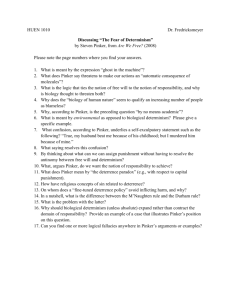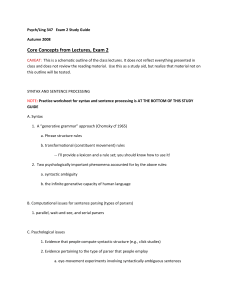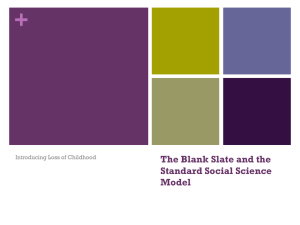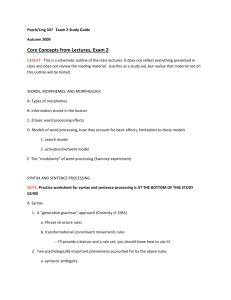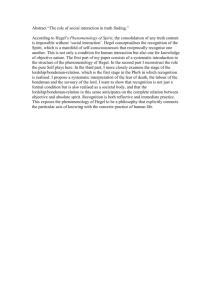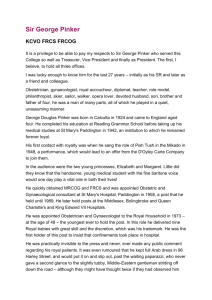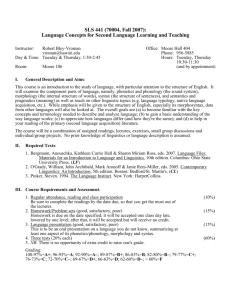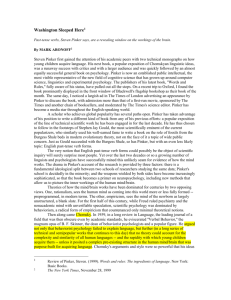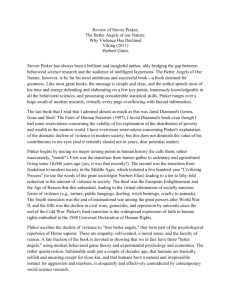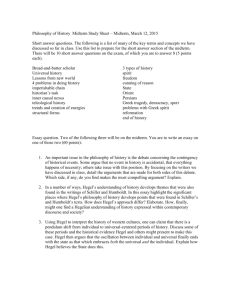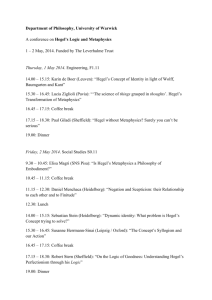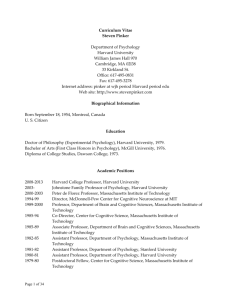Second set of questions - Michigan State University
advertisement
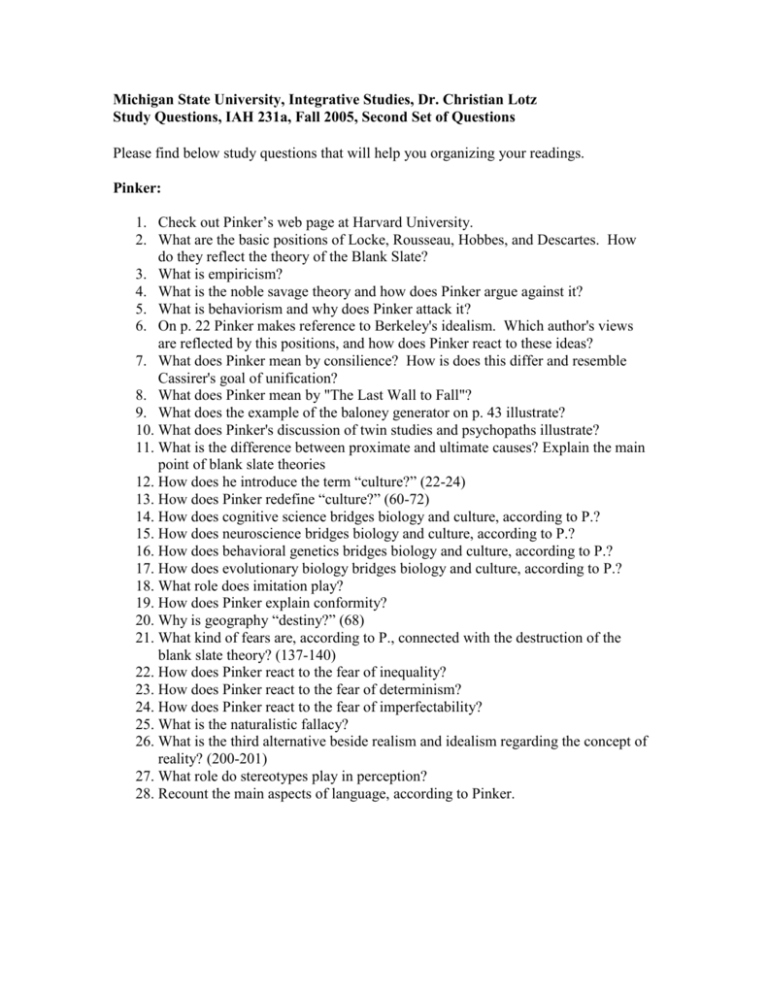
Michigan State University, Integrative Studies, Dr. Christian Lotz Study Questions, IAH 231a, Fall 2005, Second Set of Questions Please find below study questions that will help you organizing your readings. Pinker: 1. Check out Pinker’s web page at Harvard University. 2. What are the basic positions of Locke, Rousseau, Hobbes, and Descartes. How do they reflect the theory of the Blank Slate? 3. What is empiricism? 4. What is the noble savage theory and how does Pinker argue against it? 5. What is behaviorism and why does Pinker attack it? 6. On p. 22 Pinker makes reference to Berkeley's idealism. Which author's views are reflected by this positions, and how does Pinker react to these ideas? 7. What does Pinker mean by consilience? How is does this differ and resemble Cassirer's goal of unification? 8. What does Pinker mean by "The Last Wall to Fall"? 9. What does the example of the baloney generator on p. 43 illustrate? 10. What does Pinker's discussion of twin studies and psychopaths illustrate? 11. What is the difference between proximate and ultimate causes? Explain the main point of blank slate theories 12. How does he introduce the term “culture?” (22-24) 13. How does Pinker redefine “culture?” (60-72) 14. How does cognitive science bridges biology and culture, according to P.? 15. How does neuroscience bridges biology and culture, according to P.? 16. How does behavioral genetics bridges biology and culture, according to P.? 17. How does evolutionary biology bridges biology and culture, according to P.? 18. What role does imitation play? 19. How does Pinker explain conformity? 20. Why is geography “destiny?” (68) 21. What kind of fears are, according to P., connected with the destruction of the blank slate theory? (137-140) 22. How does Pinker react to the fear of inequality? 23. How does Pinker react to the fear of determinism? 24. How does Pinker react to the fear of imperfectability? 25. What is the naturalistic fallacy? 26. What is the third alternative beside realism and idealism regarding the concept of reality? (200-201) 27. What role do stereotypes play in perception? 28. Recount the main aspects of language, according to Pinker. Cassirer: 1. 2. 3. 4. 5. 6. Why, according to Cassirer, is art not imitation? What role does interpretation play in Cassirer’s conception of art? Why is art’s sole purpose not pleasure? Why is art’s sole purpose not entertainment? How does he argue against the play theories of art? Try to summarize Cassirer’s main thesis in two sentences beginning with “According to Cassirer, art…” Hegel: 1. Read an encyclopedia entry on G.W.F. Hegel, on aesthetics, on F. Schiller, on I. Kant 2. What does “aesthetics” mean? (also look it up in a dictionary) 3. What does Hegel tell us about the relation between the beauty of nature and the beauty of art? 4. Why is artistic beauty higher than natural beauty? 5. Why could someone think that art does not deserve a scientific treatment? (by “scientific” Hegel means “philosophical.”) 6. What is the relation between the sensible world and art? 7. Why does Hegel interpret the concept of “appearance” in a positive way? 8. How does art liberate us from “mere” appearances? 9. What is artistic semblance? 10. Why does art no longer satisfy our highest spiritual needs? 11. Why does our “reflective culture?” turn art into a “thing of the past,” and what exactly does Hegel want to say when he points out that art for us has lost its “genuine truth and life?” 12. Why has art to do with the “thinking activity?” 13. What does Hegel mean by his claim that the spirit (mind) “recognizes itself in its alienation” (36) 14. Explain the “usual conceptions of art” 15. Why is there, according to Hegel, an absolute need to create art? 16. Hegel discusses three possible “ends” (purposes) of art: imitation, entertainment (pleasure), moral perfection. Recount his discussion and consider why Hegel seems to be dissatisfied with those ends.
